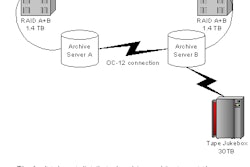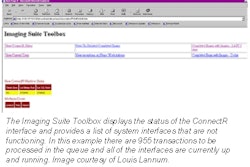SALT LAKE CITY - The academic discipline of medical informatics is being developed at universities across the U.S. But radiology, arguably the medical science most heavily dependent on the seamless transfer and display of digital information, doesn't yet have a universally accepted curriculum for the emerging specialty.
In an effort to address this need, the Society of Computer Applications in Radiology today unveiled a plan to create and fund fellowships and research grants in radiology informatics.
Dr. Byrn Williamson, chair of the SCAR program committee, outlined the fellowship and grant strategy during the annual resident’s roundtable at the Symposium for Computer Applications in Radiology (SCAR) Sunday.
The grants and fellowships committee of the society presented four goals it would like to see the program accomplish:
- Enhance the education of the next generation of radiologists.
- Facilitate the adoption of computer applications in medical imaging.
- Increase the pool of knowledgeable and productive professionals in the field.
- Support research in medical imaging informatics.
The current design of the program is for a radiology informatics fellowship to be conducted in parallel with a fellow’s existing field of specialization. "It’s important to balance the research with clinical practice, as the time in the trenches provides the most valuable source of information and experience," Williamson said.
The concern among some of the residents at the early-morning breakfast meeting was that the informatics research might add a year, or more, onto an existing fellowship. One resident advised his colleagues to "beware of flexibility." His advice was to spell out -- ahead of taking a fellowship -- how much time will be spent on clinical practice and how much time would be devoted to informatics research.
Williamson noted that the structure of the proposed fellowships was that funds contributed to SCAR to finance these programs would be disbursed to the institutions where the research is conducted. In effect, they would be paying the institution for the fellow’s research time. The committee felt this would help acceptance of the program by facilities dependent on Medicare funding, which requires fellows and residents to be solely engaged in clinical practice for reimbursement.
SCAR members Dr. Steven Horii and Katherine Andriole, PhD, both advocated creating a universally accepted curriculum for the study of radiological informatics. Horii observed that his preference for a skill set would include a background in computer network theory and operations, a general and hands-on knowledge of software coding, and a thorough understanding of the physics of image display.
SCAR’s plan, according to Williamson, is to solicit funds from vendors to finance the fellowships, as well as grants for original research in computer applications in radiology. Two classes of grants will be awarded by the society: major grants of up to $40,000 and minor grants of up to $10,000.
The society will be surveying radiology training programs over the next year to compile a list of educational opportunities in electronic imaging and radiology informatics. These results will be made available on the SCAR Web site (http://www.scarnet.org) and in its newsletter.
By Jonathan S. Batchelor
AuntMinnie.com staff writer
May 6, 2001
Related Reading
Societies offer scholarships -- and more – to improve education for radiologists, August 10, 2000
To view the rest of AuntMinnie's coverage of the SCAR meeting, just go to our RADCast@SCAR 2001 at http://scar.auntminnie.com.
Copyright © 2001 AuntMinnie.com



















